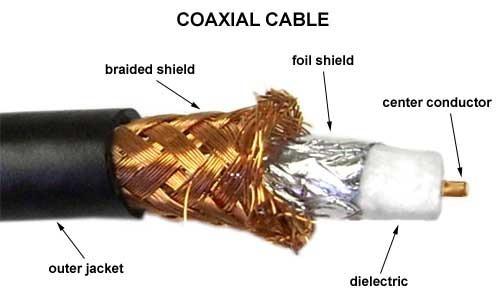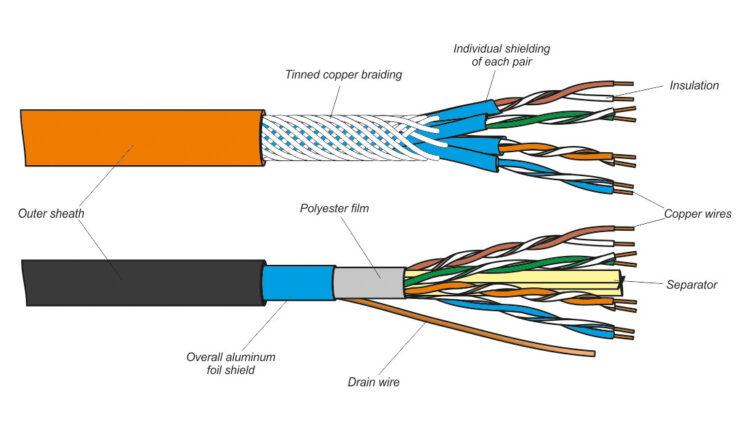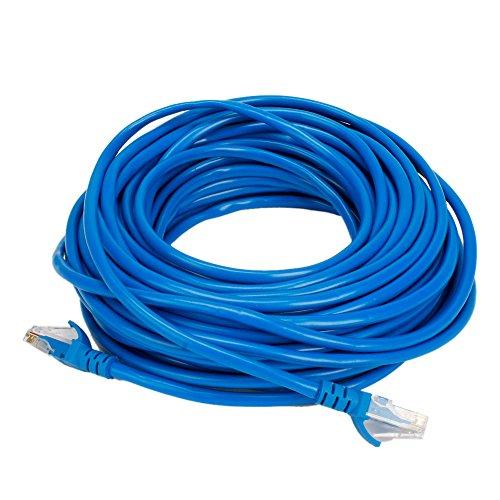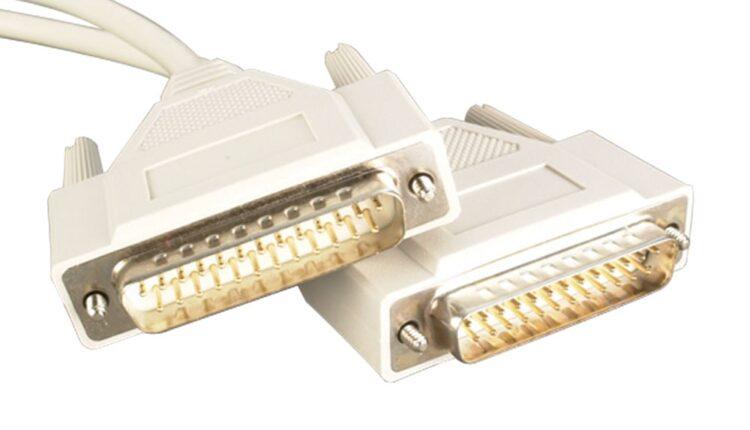Introduction to Network Cables
Network cables are the pieces of hardware that allow us to connect one network device to another. The network cables are chosen based on their topology, size, and physical layer. Coaxial cable, optical fiber cable, twisted pair cables, USB cable, Serial and Parallel Cable, Crossover Cables, and other types of network cables are available.
Each of these network cables serves a specific function. There are still computer networks that use cables to transfer data in today’s world. These cables serve as a physical medium between devices.
ad
Copper Cabling
The sending and receiving of data over copper cabling is accomplished through the use of electricity. Let’s begin with a cable that most of you are probably already familiar with. You probably aren’t even aware that many of these cables are already installed in your home, connecting things like computers, phones, and modems.
Coaxial Cables
Coaxial cable (also known as coax) was invented in the 1880s and was best known for connecting television sets to home antennas. Coaxial cable is also a 10 Mbps Ethernet cable standard.
ad

During the 1980s and early 1990s, when 10 Mbps Ethernet was most popular, networks typically used one of two types of coax cable — thinnet (10BASE2 standard) or thicknet (10BASE5). These cables are made up of an inner copper wire of varying thickness that is surrounded by insulation and another layer of shielding. Their stiffness made it difficult for network administrators to install and maintain thinnet and thicknet.
Twisted Pair Network Cables
Twisted pair emerged as the leading Ethernet cabling standard in the 1990s, beginning with 10 Mbps (10BASE-T, also known as Category 3 or Cat3) and progressing to 100 Mbps (100BASE-TX, Cat5, and Cat5e) and higher speeds up to 10 Gbps (10GBASE-T). Ethernet twisted pair cables are made up of up to eight wires that are wound together in pairs to reduce electromagnetic interference.

There are two types of twisted pair cable industry standards: unshielded twisted pair (UTP) and shielded twisted pair (STP). Due to its lower cost, modern Ethernet cables use UTP wiring, whereas STP cabling can be found in other types of networks such as Fiber Distributed Data Interface (FDDI).
Similarities and differences between STP and UTP cables
- Both STP and UTP can transmit data at 10Mbps, 100Mbps, 1Gbps, and 10Gbps.
- Since the STP cable contains more materials, it is more expensive than the UTP cable.
- Both cables use the same RJ-45 (registered jack) modular connectors.
- Both cables can accommodate a maximum of 1024 nodes in each segment.
- The STP provides more noise and EMI resistance than the UTP cable.
- The maximum segment length for both cables is 100 meters or 328 feet.
Fiber Optics
Fiber optic network cables use strands of glass and light pulses to transmit electrical signals instead of insulated metal wires. Despite being made of glass, these network cables are bendable. They have proven particularly useful in wide area network (WAN) installations requiring long-distance underground or outdoor cable runs, as well as in office buildings with a high volume of communication traffic.

Single-mode fiber optical cable carries only a single beam of light. This is more reliable and supports much higher bandwidth and longer distances than the MMF cable. This cable uses a laser as the light source and transmits 1300 or 1550 nano-meter wavelengths of light.
Multi-mode fiber optical cable carries multiple beams of light. Because of multiple beams, this cable carries much more data than the SMF cable. This cable is used for shorter distances. This cable uses an LED as the light source and transmits 850 or 1300 nano-meter wavelengths of light.
Single-mode (100BaseBX standard) and multimode fiber optic cable industry standards are defined (100BaseSX standard). Long-distance networks typically use single-mode due to its higher bandwidth capacity, whereas local networks typically use multimode due to its lower cost.
USB Cables
Most USB cables connect a computer to a peripheral device (such as a keyboard or mouse), rather than another computer. Special network adapters (also known as dongles) connect an Ethernet cable to a USB port indirectly. Twisted-pair wiring is used in USB cables.

Serial and Parallel Network Cables
Because many PCs lacked Ethernet capability in the 1980s and early 1990s, and USB had not yet been developed, serial and parallel interfaces (now obsolete on modern computers) were sometimes used for PC-to-PC networking. Null modem cables, for example, linked the serial ports of two PCs and enabled data transfers at speeds ranging from 0.115 to 0.45 Mbps.
![Serial and Parallel Cables]() Crossover Cables
Crossover Cables
Crossover cables include null modem cables as one example. A crossover cable connects two similar network devices, such as two PCs or two network switches. When connecting two PCs directly, the use of Ethernet crossover cables was common on older home networks years ago.

Externally, Ethernet crossover cables resemble ordinary cables (also known as straight-through cables), with the only visible difference being the order of the color-coded wires on the cable’s end connector. For this reason, manufacturers typically applied special distinguishing marks to their crossover cables. Nowadays, however, most home networks use routers with built-in crossover capability, which eliminates the need for these specialized cables.
Other Network Cable Types
Patch cable is a term used by some networking professionals to refer to any type of straight-through network cable used for a temporary purpose. Patch cables come in coax, twisted pair, and fiber optic varieties. Patch cables have the same physical characteristics as other types of network cables, with the exception that they are typically shorter in length.
Powerline network systems communicate with a home’s standard electrical wiring via special adapters plugged into wall outlets.
Frequently Asked Question
How do I select the best cable for the job?
While Network Cables do look alike from the outside and they all have the same connectors, they can have significant differences on the inside. You can find out the type of cable you have by looking at the text that is printed on the side of the cable.
The chances are that your cables will be made from copper Twisted-Pair cable and fall somewhere between CAT5 and CAT6. There are other cables possible but these are the most common now.
CAT5
Category 5 cabling is an older type of network cabling. They support transfer speeds of between 10 and 100 Mb/s. You do not really see these cables to buy in the store anymore, and they tend to be used in older devices such as an older router or switch.
CAT5e
Category 5 enhanced cabling supports 1000 Mb/s and cust down on external and internal crosstalk. Most cables available now are CAT5e.
CAT6
Category 6 cabling supports 10 Gb/s speeds with additional crosstalk improvements. If you are purchasing a new cable – it should really be CAT6 or above.
What is the Benefits of Being a Certified Cable Installer?
Certified cable installers are the professionals who expertise in cabling infrastructures. They have highest knowledge and skills in cabling installation. Installers ensure organizations to provide a dedicated and reliable network design. They reduce the organization’s risk and provide high performance that meets today’s industry demands.
Conclusion
As a result, we can conclude that different cables serve different purposes. We must remember that whatever cabling infrastructure we use must be certified in order to not degrade our overall performance.
ad



Comments are closed.